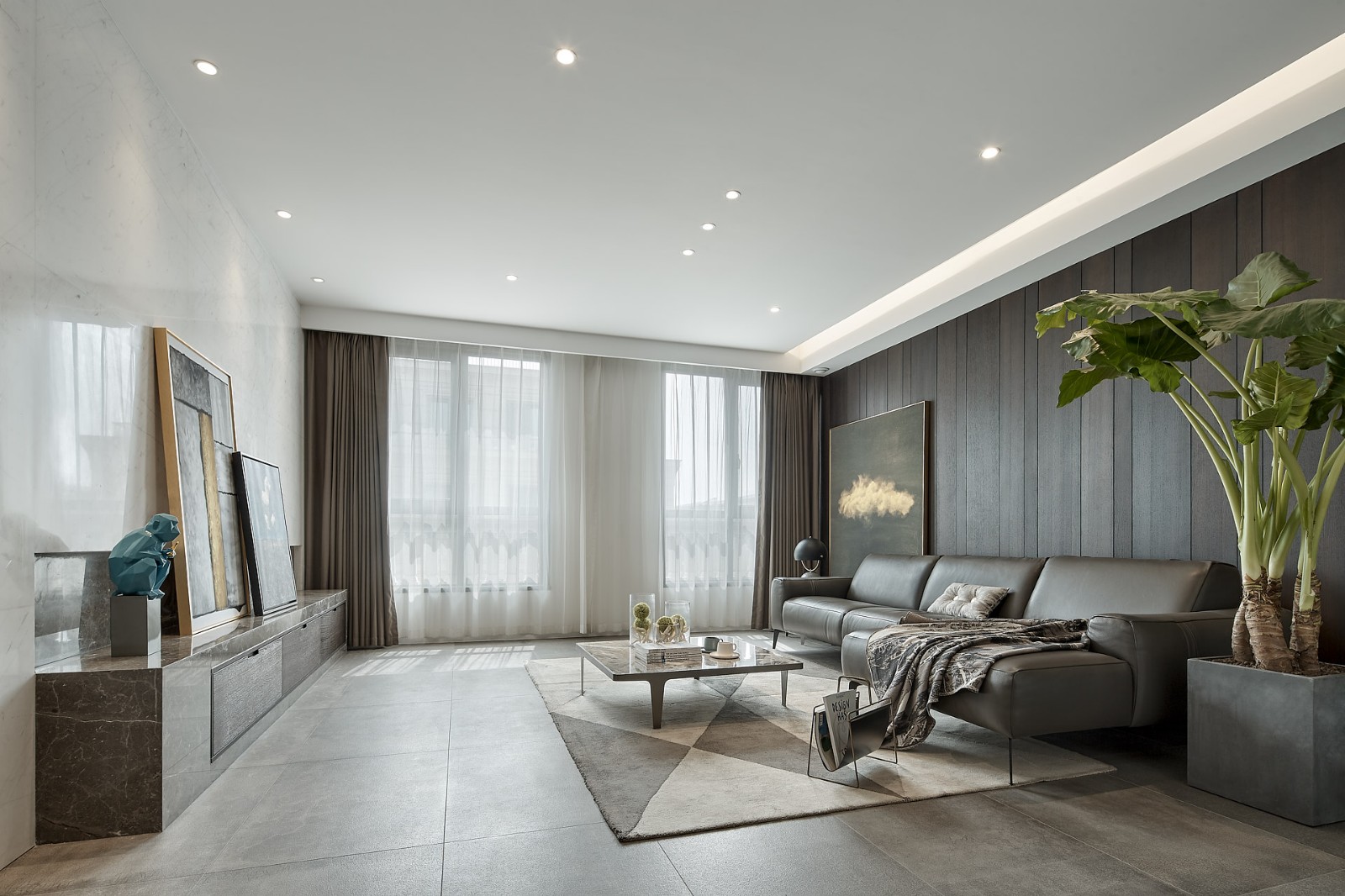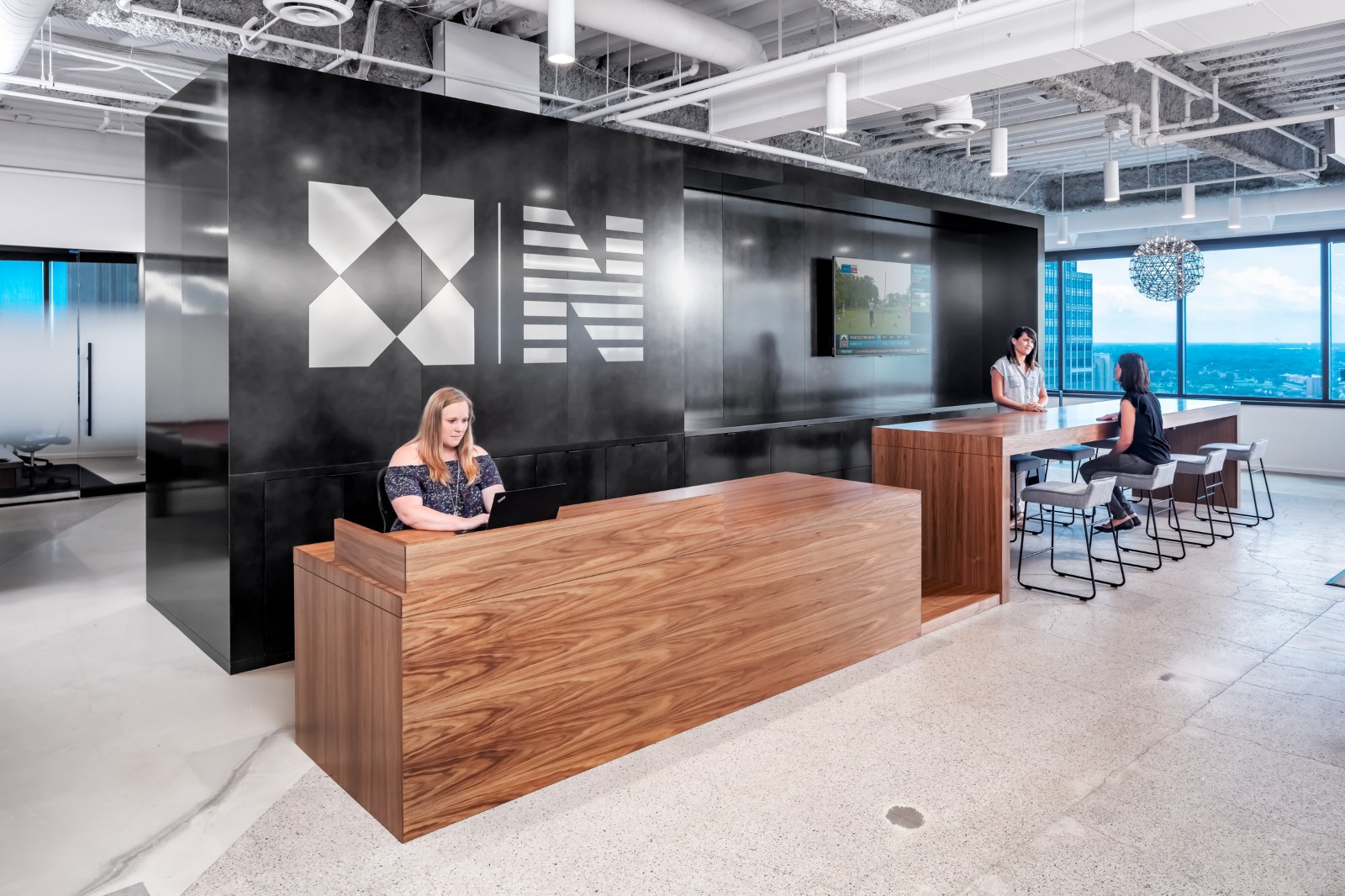University of Connecticut Social Sciences and Classroom Buildings Leers Weinzapfel Associates
2013-03-20 00:00
架构师提供的文本描述。位于校园中心的两座新教学楼构成了学生交汇处的连接,在现有的广场上,两条主要的人行横道相交。这些建筑以农业历史为灵感,以可持续发展的新景观结合在一起,为五个社会科学和人文系提供了住所,并容纳了总共40个新的高科技教室设施,从一个400个座位的讲堂到一个小型的研究室,以及12个专门部门的教学空间。
Text description provided by the architects. Located at the center of campus, two new classroom buildings frame the nexus of student interchange where two primary pedestrian paths cross at an existing plaza. Tied together by a new sustainable landscape inspired by the agrarian past, the buildings provide a home for five social sciences and humanities departments and house a total of 40 new high technology classroom facilities, ranging from a 400-seat lecture hall to small seminar rooms, as well as 12 specialized departmental teaching spaces.
设计方面的挑战是创建两座生动的学生磁石建筑,以加强费尔菲尔德和学术道路的中心人行横道,并实现一些校园总体规划目标。这些包括加强学术途径作为主要的南北步行走廊,重新调整费尔菲尔德的道路,反映行人的愿望线,发展一个明确的空间和路径层次,强化已建的校园核心,以及在规模、功能和材料上创建一个人性化的校园。橡树堂强调学术道路是主要的南北通道,通过向费尔菲尔德大道投射,加强了方向的转变;在这个交界处,它帮助把图书馆广场塑造成校园的中心。劳蕾尔大厅向费尔菲尔德大道的类似投影有助于创建一条从图书馆广场到学生会圈的更窄、更方便行人的步行道。劳雷尔大厅的中央大堂空间沿着从图书馆广场到学生会就餐区的对角线。橡树和劳雷尔酒店提供了一系列令人难忘的户外空间,包括新连接的庭院和绿色屋顶。劳雷尔大厅完成了学生会四合院的边界,并将其定义为校园内最重要的开放空间。将整个程序分成两个卷,可以减少每个建筑物的聚集量,以便更好地与邻近的建筑物和行人规模相关联。玻璃封闭大厅和人行道在地面上创造欢迎入口和透气性的印象。
The design challenge was to create two animated student magnet buildings to reinforce the central pedestrian crossroads of Fairfield and Academic Way, and to address a number of campus master-planning objectives. These include reinforcing Academic Way as the main north-south pedestrian corridor, realigning Fairfield Way, reflecting pedestrian desire lines, developing an articulated hierarchy of spaces and paths, densifying the built campus core, and creating a humane campus in scale, function, and materials. Oak Hall emphasizes Academic Way as the primary north-south walkway, strengthening its shift in direction by projecting into Fairfield Way; at this junction it helps frame the Library Plaza as the heart of the campus. A similar projection of Laurel Hall into Fairfield Way helps to create a narrower, more pedestrian-friendly walkway from the Library Plaza to the Student Union Circle. The central lobby space of Laurel Hall follows the diagonal path that leads from the Library Plaza to the Student Union dining areas. Oak and Laurel Halls provide a series of memorable outdoor spaces, including new connected courtyards and a green roof respectively. Laurel Hall completes the boundary of the Student Union Quadrangle and defines it as the most significant open space within the campus. Dividing the total program into two volumes allows the massing of each building to be reduced to better relate to neighboring buildings and the pedestrian scale. Glass enclosed lobbies and walkways at ground level create welcoming entrances and the impression of permeability.
除了校园规划目标外,教育方面的挑战还包括:1。在劳雷尔大厅建立一个教室专用的建筑,学生可以享受并受到尊重,并可与邻近的学生会一起参加会议。2.设计各种通用教室和演讲厅空间,以标准化标准为先进学习和高科技教学支持开发与合作的大学教师教室委员会和教与学研究所(ITL)。3.根据系的具体标准设计专业教室和实验室,包括计算机化语言实验室、新闻采访和电视制作空间、语言分析实验室、部门研究室和共享的座谈会空间。
In addition to campus planning objectives, educational challenges included: 1. Creating a classroom-only building at Laurel Hall that would be enjoyed and be treated respectfully by students and be available for conferences in conjunction with the adjacent Student Union. 2. Designing a variety of general-purpose classroom and lecture hall spaces to standardized criteria for advanced learning and high-tech teaching support developed in cooperation with the University’s Faculty Classroom Committee and Institute of Teaching and Learning (ITL). 3. Designing specialized classrooms and labs to department-specific criteria including computerized language labs, journalism interview and television production spaces, linguistic analysis labs, departmental seminar rooms, and shared colloquium spaces.
最西边的建筑,劳雷尔大厅(68,370 GSF),是围绕着一个内部公共区域,一个充满光线的中央中庭组织起来的.两个大型的讲堂被安置在一个紧凑型的铜质教室里,屋顶上种植着广泛的绿色;在中庭对面,17间较小的教室堆放在一个三层高的砖块里,围绕着主四合院。每个级别的所有教室附近都提供学生座位和等候空间。
The westernmost building, Laurel Hall (68,370 gsf), is organized around an interior public area, a light-filled central atrium. Two large lecture halls are housed in a compact copper volume with an extensively planted green roof; across the atrium, 17 smaller classrooms are stacked in a three-story brick volume that bounds the Main Quadrangle. Student seating and waiting space is provided near all classrooms at every level.
斜穿过费尔菲尔德路,橡树厅的两个L形砖翼(132,030 gsf)创造了一个外部公共空间,由两个相互连接的铜质庭院组成,每个学生和班级都会在四季中使用。一个大的白天照明的演讲大厅和十间教室占据了地面;学生和教师在庭院周围的公共展厅里进行互动。上述三层楼可容纳另外十间较小的课室,以及五个部门及其数百间办公室和专门的教学空间。
Diagonally across Fairfield Way, the two L-shaped brick wings of Oak Hall (132,030 gsf) create an exterior public space comprised of two interconnected copper-lined courtyards, which are used in all seasons by individual students and classes. A large day-lit lecture hall and ten classrooms occupy the ground level; students and faculty interact in the public galleries surrounding the courtyards. The three upper floors accommodate an additional ten smaller classrooms as well as the five departments and their several hundred offices and specialized teaching spaces.
这两栋建筑的所有条目都是按等级排列的,这样就可以普遍进入。公共区域的倾斜人行道可以方便地普遍进入大型演讲厅的前部和后部,其中也包括减肥座位。这两栋楼的200个座位的演讲厅都是完全可以进入的,走廊里有横冲直撞的过道。400个座位的演讲厅在大厅前面保持一个倾斜的楼层面积,以提供一个更亲密的感觉在前面的空间;后面的房间被提升到二楼的水平。所有房间都是无障碍的;除了专用于性别的无障碍厕所外,每栋楼都设有通用厕所。
All entries in both buildings are on-grade to allow universal access. Sloping walkways in public areas allow convenient universal access to front and back of large lecture halls, which also include bariatric seating. The 200-seat lecture halls in both buildings are fully accessible throughout, with ramped aisles. The 400-seat lecture hall maintains a sloped floor area at the front of the hall to provide a more intimate feeling at the front of the space; the rear of the room is stepped up to the second floor level. All rooms are accessible; in addition to accessible gender-specific toilets, universal toilet rooms are provided in each building.
大学和建筑师密切合作,制定了对环境负责的原则,以指导建筑物的设计,特别是校园对水管理的需要。劳雷尔厅于2011年完工,已被授予LEED黄金;橡树厅于2012年完工,也将获得LEED黄金认证。
The University and Architect have worked closely together to develop environmentally responsible principles to guide the design of the buildings, which were especially shaped by the campus need for water stewardship. Laurel Hall, completed in 2011, has been awarded LEED Gold; Oak Hall, completed in 2012, is also on track for LEED Gold certification.
同样的材料调色板,铜和砖,是用在两个建筑物的外部,以创建一个更连贯的校园中心。钢框架结构在这两座建筑中都创造了欢迎的悬臂覆盖入口。缅因州的区域砖块面对劳雷尔大厅的教室酒吧,覆盖着橡树厅上三层的外围。建筑物的特点是天然佛蒙特州石板地板,内置板岩或竹凳,白色玻璃柱墙,穿孔不锈钢或玻璃护栏,以及枫叶门和天花板。铜柱盖继续外部材料经验进入内部。
The same palette of materials, copper and brick, is used on the exterior of both buildings to create a more coherent campus center. Steel-framed structure creates welcoming cantilevered covered entries in both buildings. Regional brick from Maine faces Laurel Hall’s classroom bar and encloses the outer perimeter of Oak Hall’s upper three departmental floors. The buildings feature natural Vermont slate floors, built-in slate or bamboo benches, white glass posting walls, perforated stainless steel or glass guardrails, and maple doors and ceilings. Copper column covers continue the exterior material experience into the interior.
这两座新建筑相互呼应,将密集利用的学习空间的活力带到校园中心,创造出令人难忘的新景观空间。
Together, the two new buildings resonate with each other, bringing the vitality of intensively used learning space to the center of campus while creating memorable new landscape spaces.
 举报
举报
别默默的看了,快登录帮我评论一下吧!:)
注册
登录
更多评论
相关文章
-

描边风设计中,最容易犯的8种问题分析
2018年走过了四分之一,LOGO设计趋势也清晰了LOGO设计
-

描边风设计中,最容易犯的8种问题分析
2018年走过了四分之一,LOGO设计趋势也清晰了LOGO设计
-

描边风设计中,最容易犯的8种问题分析
2018年走过了四分之一,LOGO设计趋势也清晰了LOGO设计
























































































































